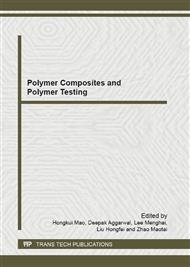p.95
p.99
p.104
p.108
p.114
p.123
p.127
p.132
p.138
The Electrochemical Performance of Carboxymethyl Cellulose with Different DS as a Binding Material in Lithium Batteries
Abstract:
The carboxymethyl cellulose (CMC) with the different degree of substitution, which was synthesized in the mixed agent system of isopropanol and ethanol and water, was used in rechargeable Lithium batteries. The electrochemical performance of the 9,10-anthracenedione (AQ) electrodes with different binders were investigated by galvanostatic discharge/charge, cyclic voltammetry and electrochemical impedance spectroscopy techniques. Tested as the binding material in a lithium cell at room temperature, the CMC electrode showed better electrochemical performance compared to a PVDF electrode. It exhibited a specific capacity of up to 214 mAh.g-1 at the initial discharge, and its specific capacity was maintained at 62 mAh.g-1 after 50 cycles. In addition, it had better stability during the charge and discharge processes. Furthermore, the electrochemical performance of the CMC with lower degree of substitution(DS) was better.
Info:
Periodical:
Pages:
114-119
Citation:
Online since:
April 2012
Authors:
Price:
Сopyright:
© 2012 Trans Tech Publications Ltd. All Rights Reserved
Share:
Citation:


